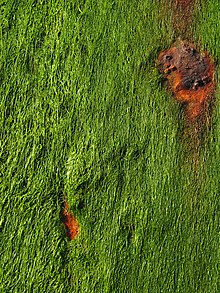HD 70642
HD 70642| 관찰 데이터 Epoch J2000.0 Equinox J2000.0 | |
|---|---|
| 콘스텔레이션 | 퍼피스 |
| 적경 | 8h 21m 28.1372s[1] |
| 적위 | - 39° 42° 19.4800°[1] |
| 겉보기 등급(V) | +7.17[2] |
| 특성. | |
| 스펙트럼형 | G6V CN+0.5[3] |
| B-V 색지수 | 0.692±0.022[2] |
| 아스트로메트리 | |
| 반지름 속도(Rv) | +49.40±0[1].13km/s |
| 고유운동(μ) | RA:-201.989±0.052mas[1]/년 Dec.:224.817±0.051mas[1]/년 |
| 시차()) | 34.1287 ± 0.0319 mas[1] |
| 거리 | 95.57 ± 0.09 ly (29.30 ± 0.03 pc) |
| 절대 등급(MV) | +4.93[2] |
| 세부 사항 | |
| 덩어리 | 1.04±0.02[4] M☉ |
| 반지름 | 0.97±0.01[4] R☉ |
| 광도 | 0.917±0.004[4] L☉ |
| 표면 중력(log g) | 4.47±0.02[4] CGS |
| 온도 | 5732±23[4] K |
| 금속성 [Fe/H] | +0.17±0.04[5] 덱스 |
| 회전 속도(v sin i) | 1.57[6] km/s |
| 나이 | 1.9±1.1 Gyr[4] 3.8±2.6[6] Gyr |
| 기타 명칭 | |
| 데이터베이스 참조 | |
| 심바디 | 데이터. |
| 외계 행성 기록 보관소 | 데이터. |
| ARICNS | 데이터. |
| 외계 행성 백과사전 | 데이터. |
HD 70642는 남쪽 꼭두각시자리에 있는 외계 행성 동반성입니다.겉보기 등급은 +7.[2]17로 너무 어두워서 육안으로 쉽게 볼 수 없다.이 시스템은 시차 측정치에 근거해 태양으로부터 95.6광년 거리에 위치해 있으며, +49.4km/[1]s의 반경 속도로 더 멀리 표류하고 있다.그것은 약 329,000년 [2]전에 태양계의 55.3 리이내에 도달했다.
이것은 [5]태양과 물리적 특성이 비슷하기 때문에 태양 아날로그 별로 여겨질 수 있다.이 별은 G6V CN+[3]0.5 등급의 G형 주계열성이다.이는 20억에서 60억 년 정도로 추정되는 태양의 나이와 비슷하다.색소적으로 비활성 상태이지만 자기장이 [5]감지되었습니다.이 별은 태양과 질량과 반지름이 거의 같고, 약간 차갑고 [4]덜 밝으며,[5] 수소에 비해 철분이 풍부합니다.1.6km/[6]s의 회전속도를 나타내며 천천히 회전하고 있다.
행성계
2003년 HD 70642의 오랜 기간 동반행성이 발표되었습니다.이 행성은 3.232AU에서 [8]원형 궤도(e=0.034)를 돌고 있다.이 별은 태양과 매우 비슷해서 거주 가능 구역이 같은 장소(~ 1AU)에 있습니다.목성은 1AU에서 지구질량 행성의 안정성을 보장합니다.이 시스템은 현재 알려진 다른 [9]행성계보다 태양계와 가장 유사한 조건 중 하나입니다.
| 동반자 (별부터 순서대로) | 덩어리 | 세미마조르 축 (AU) | 공전 주기 (일) | 편심 | 기울기 | 반지름 |
|---|---|---|---|---|---|---|
| b | 1 1.75±0.09 MJ | 3.263±0.010 | 2148.7±9.8 | 0.140±0.051 | — | — |
「 」를 참조해 주세요.
레퍼런스
- ^ a b c d e f g VizieR에서 이 소스에 Brown, A. G. A.; et al. (Gaia collaboration) (August 2018). "Gaia Data Release 2: Summary of the contents and survey properties". Astronomy & Astrophysics. 616. A1. arXiv:1804.09365. Bibcode:2018A&A...616A...1G. doi:10.1051/0004-6361/201833051.대한 Gaia DR2 레코드.
- ^ a b c d e Anderson, E.; Francis, Ch. (2012). "XHIP: An extended hipparcos compilation". Astronomy Letters. 38 (5): 331. arXiv:1108.4971. Bibcode:2012AstL...38..331A. doi:10.1134/S1063773712050015. S2CID 119257644.
{{cite journal}}: CS1 유지보수: 포스트스크립트(링크) - ^ a b Gray, R. O.; et al. (July 2006). "Contributions to the Nearby Stars (NStars) Project: spectroscopy of stars earlier than M0 within 40 pc-The Southern Sample". The Astronomical Journal. 132 (1): 161–170. arXiv:astro-ph/0603770. Bibcode:2006AJ....132..161G. doi:10.1086/504637. S2CID 119476992.
- ^ a b c d e f g Bonfanti, A.; et al. (2015). "Revising the ages of planet-hosting stars". Astronomy and Astrophysics. 575. A18. arXiv:1411.4302. Bibcode:2015A&A...575A..18B. doi:10.1051/0004-6361/201424951.
- ^ a b c d Fossati, L.; et al. (March 2013). "Detection of a magnetic field in three old and inactive solar-like planet-hosting stars". Astronomy & Astrophysics. 551: 4. arXiv:1302.0879. Bibcode:2013A&A...551A..85F. doi:10.1051/0004-6361/201220997. A85.
- ^ a b c Costa Silva, A. R.; et al. (February 2020). "Chemical abundances of 1111 FGK stars from the HARPS-GTO planet search sample. III. Sulfur". Astronomy & Astrophysics. 634: 10. arXiv:1912.08659. Bibcode:2020A&A...634A.136C. doi:10.1051/0004-6361/201936523. A136.
- ^ "HD 70642". SIMBAD. Centre de données astronomiques de Strasbourg. Retrieved 2020-09-04.
- ^ Carter, Brad D.; et al. (2003). "A Planet in a Circular Orbit with a 6 Year Period". The Astrophysical Journal Letters. 593 (1): L43–L46. arXiv:astro-ph/0307066. Bibcode:2003ApJ...593L..43C. doi:10.1086/378185.
- ^ Hinse, T. C.; et al. (2008). "Dynamics and stability of telluric planets within the habitable zone of extrasolar planetary systems - Numerical simulations of test particles within the HD 4208 and HD 70642 systems". Astronomy & Astrophysics. 488 (3): 1133–1147. Bibcode:2008A&A...488.1133H. doi:10.1051/0004-6361:200809822.
- ^ Wittenmyer, Robert A.; et al. (2020). "Cool Jupiters greatly outnumber their toasty siblings: occurrence rates from the Anglo-Australian Planet Search". Monthly Notices of the Royal Astronomical Society. 492 (1): 377–383. arXiv:1912.01821. Bibcode:2020MNRAS.492..377W. doi:10.1093/mnras/stz3436. S2CID 208617606.


